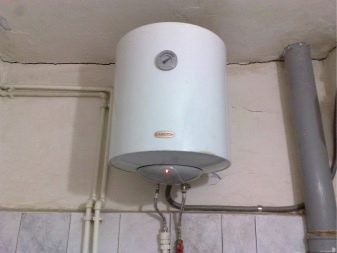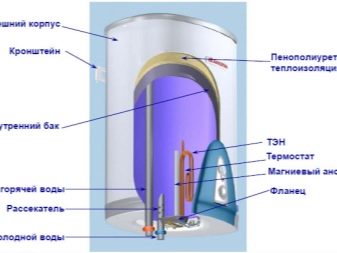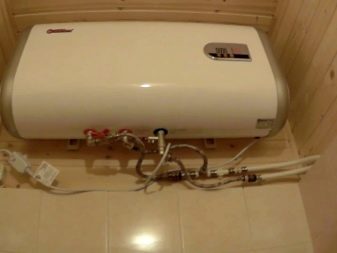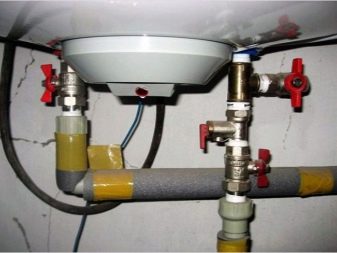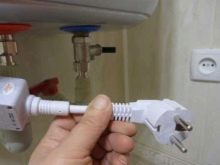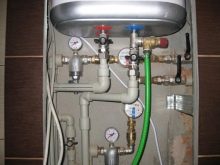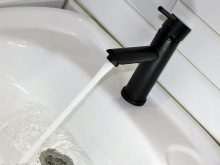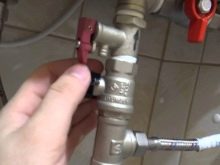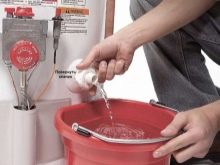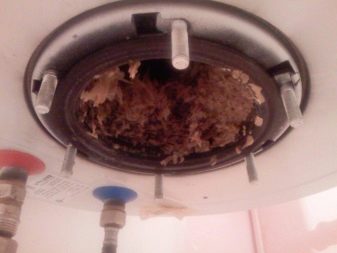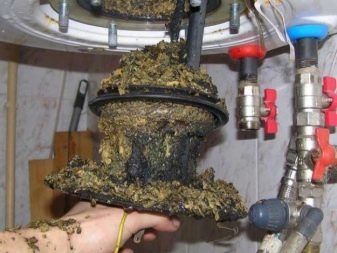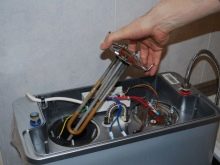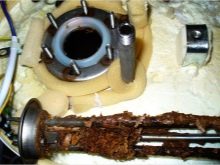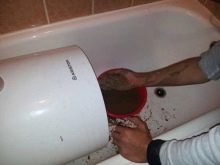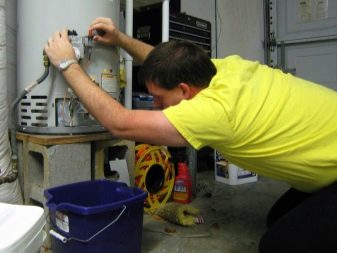How to quickly drain water from an Ariston water heater?
A simple way to organize convenient access to hot water is to use the Ariston storage water heater. Such devices are a tank that is filled from the water supply.
Depending on the required amount of water, tanks come in different volumes. (for example, a volume of 30 liters is designed for 2-3 people). Heating occurs quickly, thanks to a tubular electric heater (heating element), which is located inside the tank and is connected to the power supply network. Such water heaters are very reliable and do not require special maintenance.
The main question that arises during operation is how to drain the water from the Ariston water heater. For a specialist, this is a simple task.
However, even an inexperienced user can easily cope with this task if he reads the instructions.
When do I need to drain?
We carry out this procedure in two cases.
- Leaving the water heater in a cold house for the winter. In winter, the remaining water freezes, causing the tank to break. It is important to remember that after the boiler has been drained, the internal parts of the tank may corrode. This is due to the negative effect of water on the metal inside: after emptying the tank begins to slowly rust under the action of oxygen.
- In case of failure of the water heater. Obviously, before proceeding to repair, you need to drain the tank. If the water heater is still under warranty, you should call the service center wizard. He will diagnose and carry out repairs on site.
Drain water properly
All information on how to properly dispose of Ariston is contained in the instructions, but as a rule, at the time of the discharge procedure, the device owners have time to throw it away.
In this case, here is a detailed walkthrough:
- for a start - turn off the water heater from the mains;
- then shut off the water with a valve on the cold water supply pipe;
- now give cool baku.
In order to more clearly understand the further procedure of the drain, we will take a closer look at how the water heater is connected to the water supply.
If the installation was carried out by a specialist, he must have placed two additional devices on the inlet and outlet pipes of the water heater. A drain valve is placed on the cold water pipe after the shut-off valve. Through this faucet, and water is drained from the water heater. On the pipe leaving Ariston (through which hot water flows), an intake tap is placed. These two elements are very important.
Now back to the drain procedure.
- Open the mixer, which is supplied with hot water from the water heater. With this action, we reduce the pressure inside the tank. Remember that water can give a slight leak from the tap until the pressure inside is higher (you need to wait until it is equal to the external pressure and stop flowing).
- Open the air intake valve. The empty space inside the tank will begin to fill with air.
- The last open the drain valve. Usually a small hose is attached to it through which water is diverted to the nearest drain or tank.
When the procedure is completed, there is still moisture in the tank, small particles of sand and rust (sediment). Completely remove it through the drain valve will not work.
Such a sediment can not only reduce the volume of the tank and reduce the heating time, but also lead to breakdowns.
How to remove sediment?
Consider the signs that indicate that it is time to clean:
- water heating time has increased significantly;
- pressure has changed (pressure has decreased);
- the boiler began to make extra sounds, there was a noise;
- water began to drip from the safety valve (or stopped altogether);
- it is time for routine cleaning for prevention.
Also during the change of the heating element or the magnesium anode, the device will have to be freed from the contents and cleaned.
Despite the fact that the process of removing sediment in the tank is not complicated, we still advise you not to carry it out yourself.
If you still decide to perform the procedure yourself - follow our tips. For cleaning it is better to put Ariston on the floor.
Further cleaning takes place in several stages.
- Remove the upper casing of the tank. Disconnect the electrical wires.
- We begin to unscrew the heater with a gas key. We recommend to substitute capacity under an opening. As you begin to unscrew the flare nut, water and sediment will flow out from under it. So you can easily ruin the floors.
- Remove the heater completely.Clean through the hole in its place. To speed up the process, you can open the slam-shut valve slightly. After that, collect the water heater. When you install the heater in place, it is very important to check the tightness of the connection.
Conclusion
Important: if the contents in the tank are already quite long and had an unpleasant smell, then you can simply open the tap and let the stagnant water drain. After that, the boiler is heated (up to the maximum temperature) in order to destroy the unfavorable microflora. The procedure is repeated three or four times.
Drainage of water from the water heater is a simple process, however, it requires careful implementation of instructions. Quite often, buyers when self-placement deliberately do not install the drain and air intake valves, and also make changes to the connection scheme. This not only creates problems when draining, but also entails a premature failure of the boiler. That is why it is recommended to strictly follow the instructions.
How to drain the water from the Ariston water heater correctly, see the following video.

